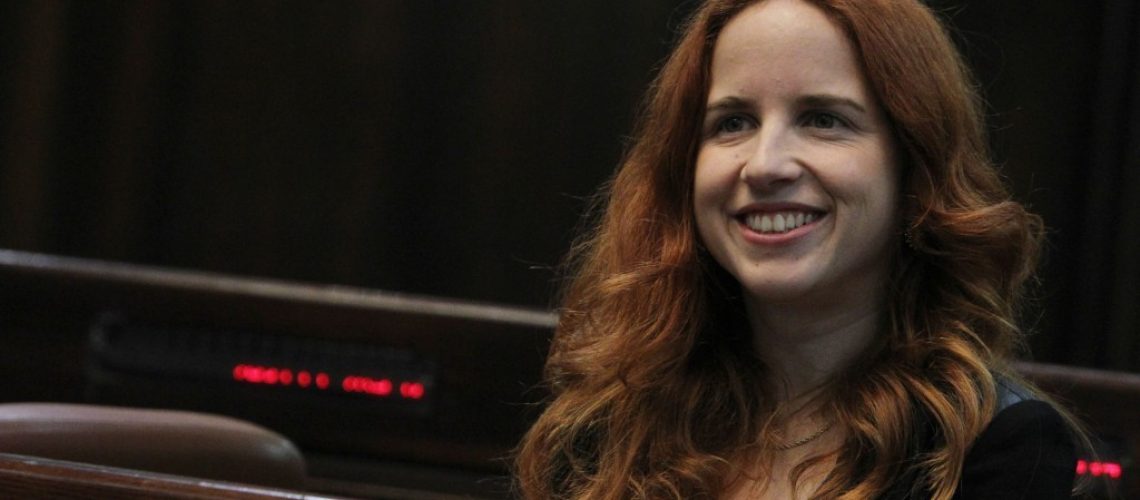Stav Shaffir was a leading face of Israel’s social protest movement of 2011; tent encampments sprouted throughout the country and hundreds of thousands of citizens poured into the streets to protest the skyrocketing cost of housing and Israel’s shriveling social safety net. A charming and intelligent young woman, Shaffir was elected to the Knesset on the Labor Party slate. Today, she is one of Labor/the Zionist Union’s leading voices.
Visiting New York, she spent part of the afternoon of July 21 in conversation with the Conference of Presidents of Major American Jewish Organizations. I caught her in the evening, in an event arranged by Ameinu, in a jam-packed living room on Manhattan’s Upper West Side.
As she tells it, her most important achievement as a politician is to have successfully defied the usual way of doing things by making the budgetary process transparent. She scanned the voluminous national budget onto Facebook, making it subject to serious critical analysis — line by line — for the first time.
Shaffir’s most significant political insight is that the dovish left is not unified in the way that the right is. She mostly put this down to a weakness of “ego” among leaders of the various center-left parties.
As part of this point, she accepts the notion that Yair Lapid’s Yesh Atid (“There is a Future”) party is really leftwing, rather than centrist as it characterizes itself. (Like most Israelis, she largely defines the concept of left vs. right according to the peace issue.) Her evidence is polling data that “98%” of Yesh Atid voters support a Palestinian state alongside Israel.
On the other hand, she seemed dismissive of the potential for the United Arab List of parties in the Knesset to be a constructive part of the leftwing bloc. She did not discuss this issue in detail, which would have focused upon the ultra-nationalist Balad party preventing more moderate and progressive elements in the Arab bloc (e.g., Hadash) from working closely with “Zionist” parties (i.e., those parties with a Jewish majority of supporters).
When pressed to reassure doubters that there is a partner for peace on the Palestinian side, she did not respond in detail. Such an answer would have mentioned when Israel has fallen down in completing a deal: e.g., when Rabin was assassinated, Netanyahu narrowly defeated Peres in ’96, and Olmert was sidelined from completing negotiations with Abbas by his own legal problems and by being provoked by Hamas to invade Gaza in 2009. Still, she opined that Israel should not engage in negotiations unless and until the left is in power, because otherwise such a process is doomed to failure and provides fresh fodder to the rightwing argument that “there is no partner for peace.” For this reason, she opposed Herzog’s effort a few months ago to lead Labor into the Netanyahu coalition.
The policy that she favors now is for Israel to begin to evacuate settlements beyond the major settlement blocs. Complications to this approach, which she did not mention, include defining the exact geographic boundaries of these “major settlement blocs” (e.g., Ariel and Ma’aleh Adumim — the third and fourth largest settlement towns — both project far into the West Bank). She also cited the need for Israel to finally engage with the Arab League’s peace initiative as a basic starting point for negotiations.
Overall, I found her charmingly spirited and realistic. She sees Netanyahu’s course of maintaining the status quo as uncharacteristic of Zionism for fatalistically closing off options and inexorably moving Israel toward a one-state future. This would undermine the concept of self-determination for the Jewish people, a basic Zionist principle that she proudly embraces.

